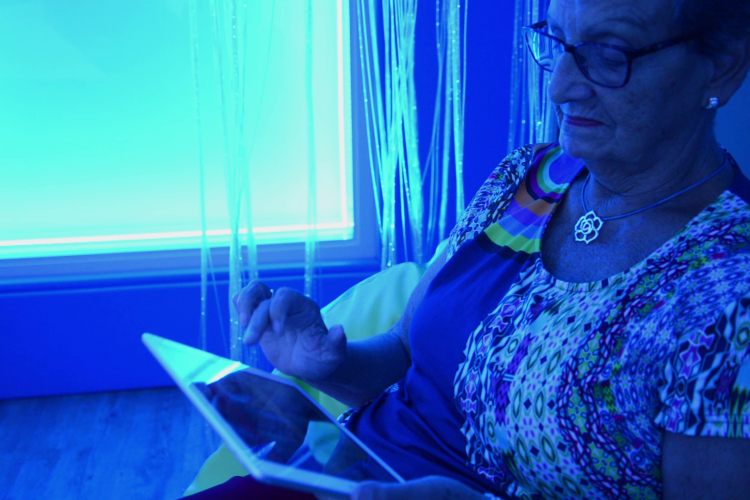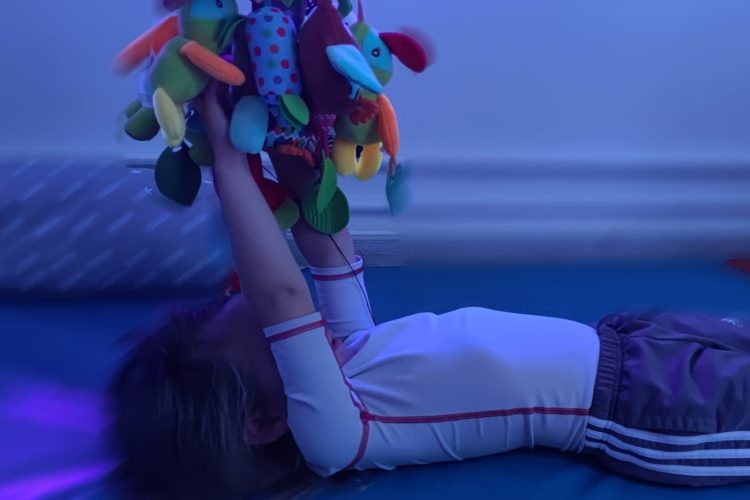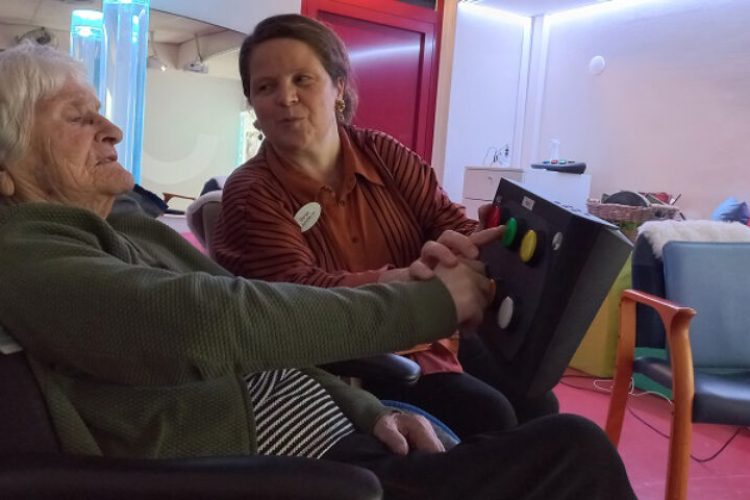One of the main questions that arises when considering installing a multisensory classroom in a regular school is whether it is really a good investment. A multisensory classroom for all students in a regular school? Yes, it is possible!
At CEIP Lloma Llarga (Spain), we have been working with multisensory classrooms since the 2016-17 school year. Initially, our classroom was completely ‘low cost’: we created our immersive environments with materials made by ourselves and had very few devices to assist us in the task, just a few light tables, a sound system, and aroma diffusers. But let’s start from the beginning…
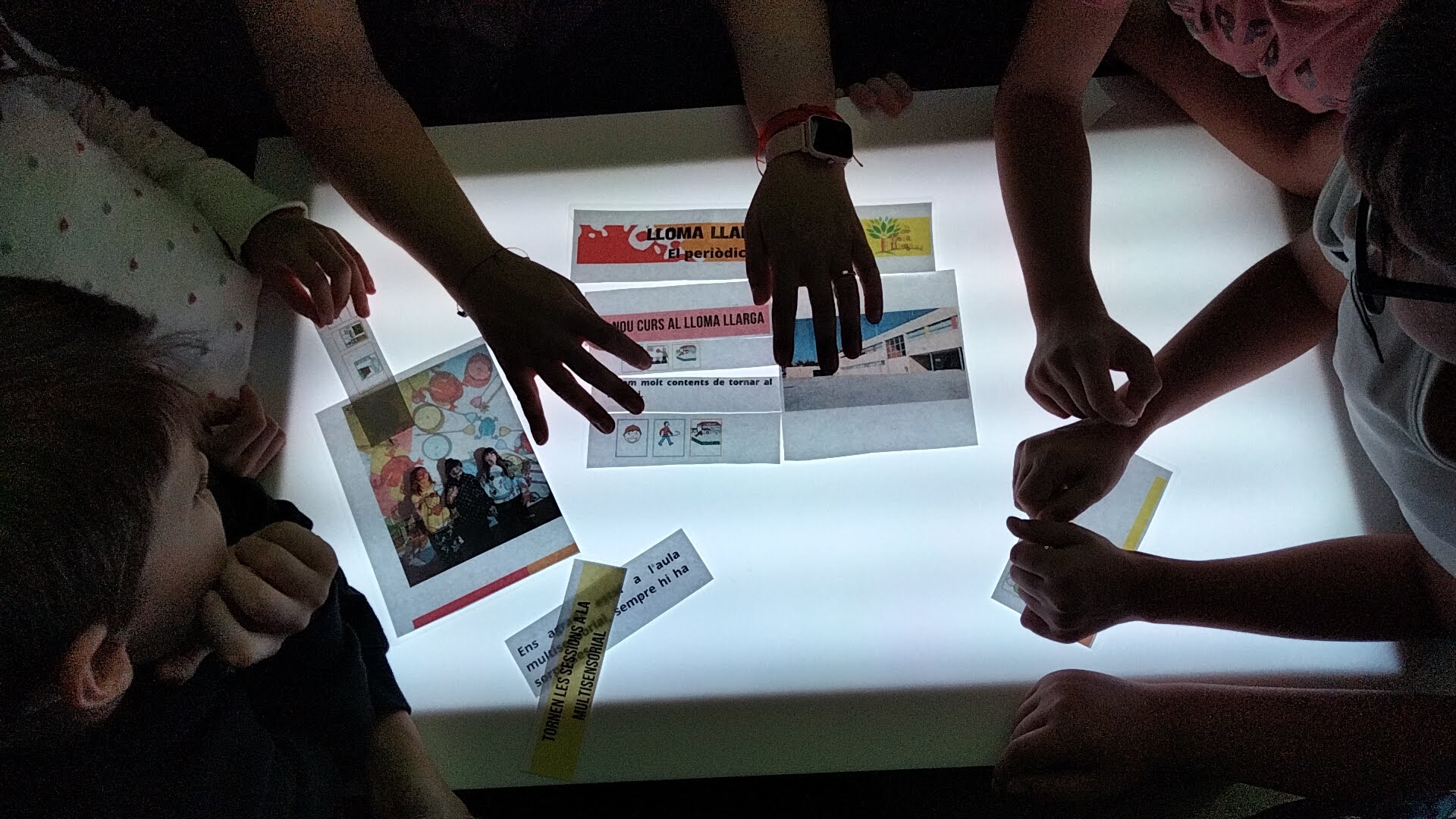
Integrating all our senses into the teaching-learning process
In our center, we have a philosophy: there is nothing in the mind that has not previously passed through the senses. The phrase is very good, but it’s not ours. It’s something Aristotle said over two thousand years ago. And he’s not wrong! If we analyze it, we realize that traditional teaching primarily uses two senses: sight and hearing. However, we have other senses that we are not taking advantage of: taste, touch, smell, proprioception, vestibular… Why not integrate them into the teaching-learning process as well?
These reflections led us to investigate more on the subject, to train ourselves in sensory pedagogies and active pedagogies. And so we discovered that, for example, the sense of smell is the most powerful in evoking memories from the past. If we integrate it into learning, we can make it easier to remember content if we have linked it to a specific aroma. And this works with the rest of the senses too. And the more senses we relate to the learning in question, the more meaningful the experience will be and the easier it will be to internalize and remember. In this way, we improve cognitive accessibility to the content for all students, favoring each one to rely on their sensory preferences.
With these premises, we began to work in the multisensory classroom. And we extended it to all students in the center because, seeing that it worked with students with educational needs, we knew it would also work with typically developing students. And the truth is that it does work.
We create immersive environments for all students
At first, it wasn’t easy. It was about creating immersive environments where students could live and experience the content we were working on. In early childhood education, we were working on the seasons of the year, which meant changing the classroom for each season (adapting materials, colors, smells…). This involved a huge effort, not only in terms of organization but also in creating all the necessary materials to carry it out. And then we found the solution in Qinera.
With the incorporation and installation of their technology in our new multisensory classroom, the possibilities multiplied. The ability to change environments with just one click helps us to work on many more things within our classroom. In the multisensory classroom, we can work from stories in early childhood education to curriculum content in primary education. We have conducted science sessions, spelling reviews, English sessions… The possibilities are endless.
The first step is to think about what we want to work on based on the needs we may have in the center. From there, and always following the Multisensory Storytelling methodology, the session is shaped.” – Yolanda, teacher at the center
In our classroom, journalists are graduating!
This year, we are working on an “Escape Room” where we review curricular content that is important for the students. The theme of the project is based on the center’s innovation project, which revolves around the media.
The objective of the Escape Room is to obtain a journalist diploma that will allow them to participate in other activities within the innovation project. The Escape Room consists of six challenges (adapted to each educational level), which are divided into three parts: print media, radio, and television.
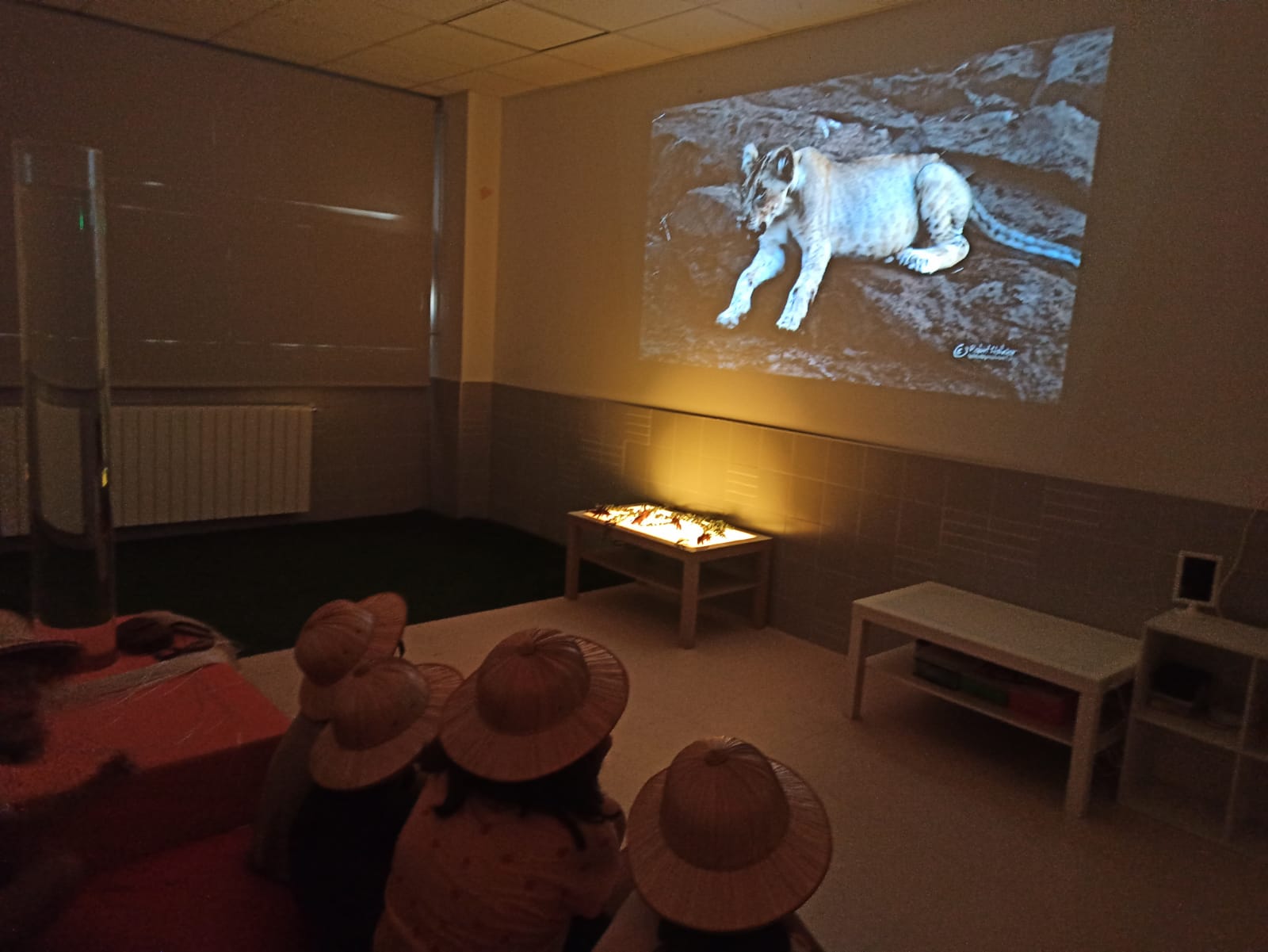
Working on grammar and metaphonological skills
The written press tests serve us to work on grammar, metaphonological skills, and spelling.
- As an introductory element to the activity, we use a teleprinter (we explain what it is and that it serves to receive messages).
- Information arrives at our teleprinter altered, and the students have to fix it. This information may arrive with spelling mistakes, with words joined together… And the correct answer is found on the screen.
- Thanks to the SHX system, we see the six options on the screen. Using the 6-button remote or Button 6, they choose the option they believe is correct, and that’s when the magic begins. Only the correct option activates a device in the room (for example, the bubble tube). The others don’t, although they do activate a music that lets us know we haven’t guessed correctly.
The next test is the newspaper layout. Our newspaper is inclusive and also works with pictograms. We carry this out on the light table, and we activate its color when we finish laying out the newspaper. Depending on the level of the students we are working with, the difficulty of the layout varies.

Auditory sequential memory and concentration
In the radio block, we work on tactile stimulation and concentration, as well as auditory sequential memory. We host a radio contest where they have to guess which song is playing. This activates the vibrating pouf… but it doesn’t end there.
- Once they’ve identified the song, the real “contest” begins. They have to count how many times certain words in the song are repeated (depending on the level, there may be more or fewer proposals), so that by the end of the song, they have the number of times each word is repeated.
- When we combine these numbers, a code is formed that they have to find on the screen and select with Button 6 the correct option. Again, if they find the key, a device will be activated in another color.
The next radio activity is description. We relate this activity to the radio by explaining that good radio announcers have to be able to describe things very well, since radio is a medium where we can only listen, we can’t see what they’re telling us. They become announcers and must describe an object inside a box (stereognosis box). This way, they work on oral expression and description. Additionally, they must perform this activity in a foreign language in higher grades (they review vocabulary in English). Each object they correctly identify is an option to uncover which box hides the color code.

Creativity and Mathematics
Once we finish the activities in the radio block, we move on to the television block. The first activity is related to mathematics.
- Under the pretext that we don’t have all the audience data for this week, we present mathematical problems that lead us to find this audience data. Depending on the level, calculations range from simple subtraction to combinations of much more complicated operations in the case of 5th and 6th graders.
- Again, we have six options on the screen, and they must find the cell where the correct result is to get the next color of the code.
The last activity of the Escape room closes the television block. Here we take the opportunity to work on oral expression, executive functions, planning, creativity, etc. and on a sensory level, we work on taste and smell. We have a chocolate fondue (which gives the classroom an olfactory ambiance) and we show them various pieces of fruit and wooden skewers. We explain that they are scriptwriters for a cooking program, and with these elements, they must think about what recipe they will develop for the program that week.
The most common thing is that they make a fruit skewer dipped in chocolate, but we reward originality, presentation, and even the name they give to the recipe. With the elaboration of the recipe, they obtain the last color code of the escape room.
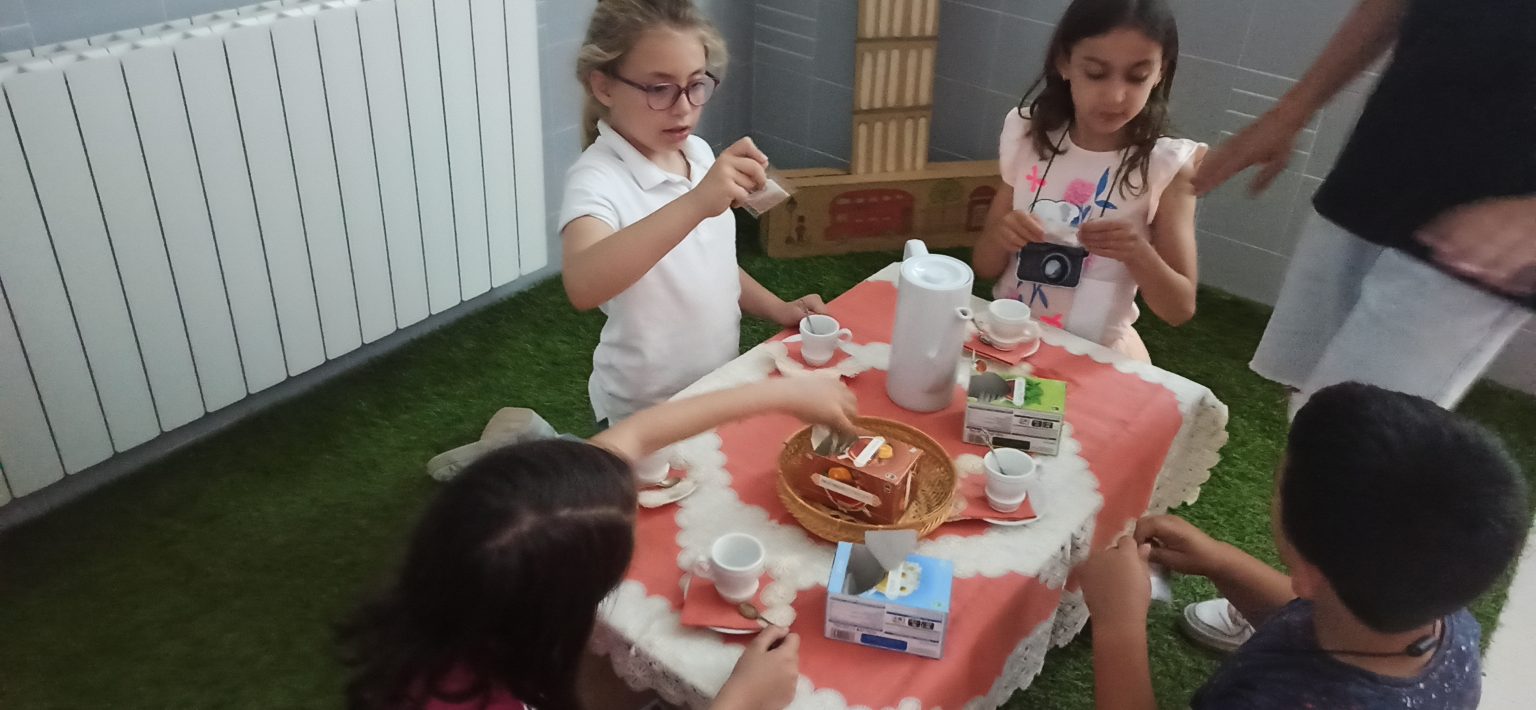
If you remember, each activity has been triggering a device that lit up in a different color each time. They have to remember the code of the six colors to reproduce them on the Button 6. If they enter it correctly, a video is activated congratulating them for reaching the end and for overcoming the challenge. At the end of the session, they are awarded a diploma certifying that they are now professional journalists (remember that this was the objective of the Escape room).
An extremely positive experience for both students and teachers
This is just one example of everything we can do in a multisensory classroom. Our experience has been very positive, as all the curriculum content we work on in the classroom is experienced with great intensity and emotion, which makes them work without realizing they are working. This motivation helps them overcome their difficulties without being aware of their effort, as they see it as a game. And for a child, playing is the most natural thing to do. What better way to learn than through play?
Free Project Design
If you want to learn more about the benefits of Multisensory Environments or see how you could adapt it to your space, therapeutic goals, and users, you can send an email to hello@qinera.com.














